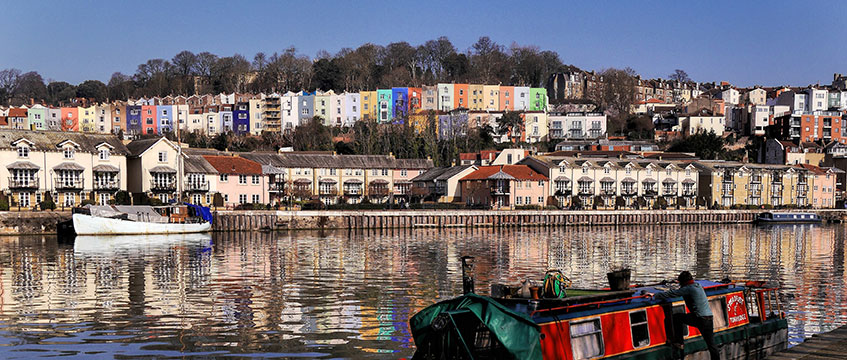Property developers and planners in Bristol should focus on increasing density within the city’s existing footprint to unlock growth, as well as expanding beyond the current “choking” green belt constraints, according to a new report.
The Ship shape? How the planning system is holding back Bristol’s economy briefing from think tank Centre for Cities highlights how a lack of housebuilding is limiting the economic potential of “the strongest performer of all the UK’s large cities”.
Bristol’s GVA nearly doubled between 2004 and 2021, but housebuilding has not kept pace and house prices have more than doubled. According to ONS figures for 2023, Bristol’s rents have increased faster than those anywhere else in the UK since 2015.
Andrew Carter, chief executive of Centre for Cities, said: “If successful cities such as Bristol are seeing their economies held back by the lack of housebuilding, this amounts to a significant constraint on the nation’s economy as a whole. National planning policy should enable our cities to expand up and out, so that they can fulfil their wider function of creating productive jobs and driving prosperity in their wider area.”
One growth-limiting factor is the density of Bristol’s existing urban footprint, which is the second-lowest of England’s 10 largest cities. If Bristol’s densest 5 sq km were as dense as Manchester’s – which ranked third-densest of England’s largest cities but is not especially dense by international standards – Bristol would have over 2,000 more homes.
Housebuilding has so far been concentrated in specific areas, such as the city centre and to the south-west of the city, in Long Ashton, Failand and out at Weston-Super-Mare, while 62% of neighbourhoods in Bristol and its commuter belt contributed to less than 1% of new homes built.
The report recognises the value of converting properties from commercial to residential use in Bristol, where 9% of new housing stock has come from office conversions.
However, the report warns against over-reliance on this source of housing, as there is also a mismatch between supply and demand for office space in the city. Savills recently named Bristol as the best-performing city for office take-up, with a 70% increase in annual occupier activity during the first half of 2024. In fact, the report recommends the use of an article 4 direction in the city centre to ensure “switches from commercial to residential aren’t cannibalising the former”.
The city’s ability to grow is also limited by protected green belt land, which covers 49% of all land in the West of England Combined Authority area. The protected area is four and a half times larger than the city itself.
This leaves little space for housebuilding around key areas of the city. Park Street, one of Bristol’s main high streets, is just one mile away from the nearest green belt protected land. Temple Meads station, one of the UK’s busiest railway stations, is just 1.7 miles away from the nearest green belt land.
The recommendations
The report suggests changing from the current case-by-case discretionary planning system, which creates uncertainty among developers and limits both residential and commercial construction, to a new rules-based flexible zoning system.
It also recommends that national and local government release green belt land adjacent to roads and railway stations to allow Bristol to build out while making use of existing infrastructure.
One step towards achieving this would be to include a requirement for authorities to allocate land around non-urban railway stations and using local development order powers around urban stations such as Ashley Down in north Bristol.
Other recommendations focus on increasing the spatial planning powers of the WECA mayor, as outlined in this week’s King’s Speech, expanding the WECA to include north Somerset and increasing the use of LDO powers by local authorities.
Compare and explore the Bristol market >>
Photo © Andy Newton/Unsplash
Send feedback to Dominic Plaskota
Follow Estates Gazette











